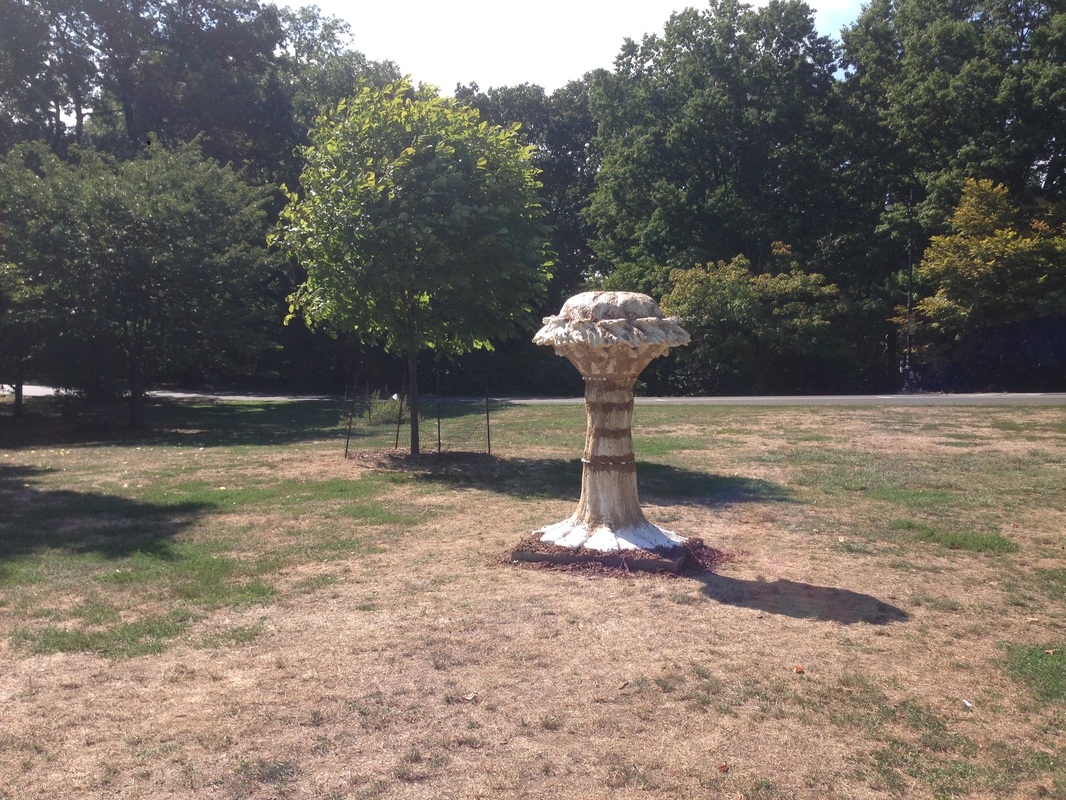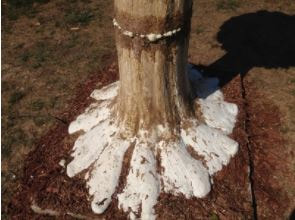Opisthokonta
|
The opisthokonts are a broad group of eukaryotes, including both the animal and fungus kingdoms, together with the eukaryotic microorganisms that are sometimes grouped in the paraphyletic phylum Choanozoa.The opisthokonts, sometimes referred to as the "Fungi/Metazoa group", are generally recognized as a monophyletic clade. The sculpture is on display in Prospect Park, Brooklyn from September 17-25 as a part of the Art Slope Art Festival in association with the Park Slope Civic Council.
This sculpture is composed of human limbs in the form of a mushroom. The source of the limbs are 3D scans of the artist. The 3D models are manipulated into shape then programmed into a 7 axis robot where the form is carved in foam. Once the milling is complete the finishing work begins. This includes application of cement, sand, wood chips, soil, moss, bees wax, and the casting of the cement slab base. Opisthokonta merges human an fungus into one form. The continued study of our earth and its environments continues to reveal connections between species. This sculpture is meant to reveal our connections with the earth. While at the same time the foam material and technical process by which the piece is carved highlights our reliance upon technology and carbon. The piece holds within it the dichotomy or our need to improve our connection with the earth, while at the same time show what our technology allows us to do. We are living in the anthropocene, the age by which we shape not just our culture, but our environment and the fate of other species as well. We will need to lean on the earth, other species, and improve our technology as we grow as a species. The deconstruction and rearrangement of the body remind us of our mortality. But the reforming of these parts into something new reminds us of the larger ecosystem. The transference of nutrients from one form to another is necessary for life to survive. Fungus play an important role in this process. And humanity's role in this process is growing with our increasing control of agriculture, resources, and production. Opisthokonta is a duality, it celebrates our connection to fungus, the earth, and the ecosystem, while at the same time being a product of industry, and the marching anthropocene. The antrhopocene is a mark of time, a changing epoch. Life and death are also time markers. The earth materials used in this sculpture are ephemeral, having a time and environment interaction. The wax will heat and cool with the sun and shadows, mixing with the sand, woo chips, soil to create and change the colors, pattern, and texture of the work. This environment dependent change in the work references mortality, climate change, and mimics changes in mushrooms during their life cycle. |
©2016-2023 David D'Ostilio - All rights reserved










